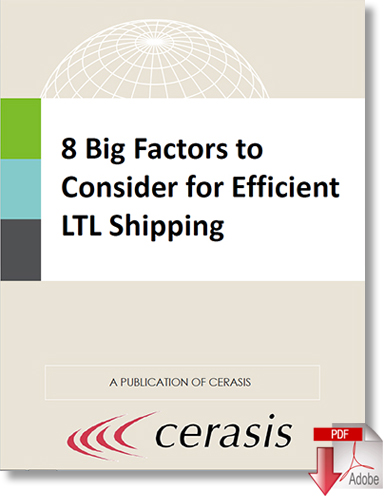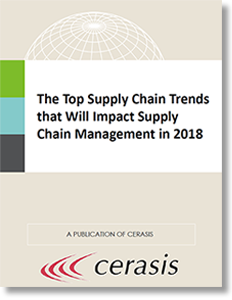Holiday Peak Season
Less-than-Truckload (LTL) peak season takes place during the holiday shopping season each year, and if last year’s shoppers are any indicator, the LTL peak season for 2018 will excel past all records.
This is even more likely thanks to tight capacity, fewer drivers on the road and even refusals to ship freight from full truckload carriers.
What’s Contributing to Higher LTL Rates in Advance of Peak Season?
Freight rates are up in anticipation of the 2018 peak shipping season.
According to William B. Cassidy of JOC.com, UPS has already announced freight sales events and expectations for higher package volumes.
Unfortunately, John Haber, CEO of Spend Management Experts, believes that numerous barriers to meeting surging demand, mainly, available shipping capacity, will result in considerable spikes to freight spend.
The effect will be felt in LTL shipments as well. Rate increases for parcels are expected to hit 5 percent, and LTL rates will surge up to 6 percent within the next two months. Accessorial charges may rise to double-digit rates.
The last year has been a continuation of freight rate hikes, with increases hitting the market in seven out of nine months in the past year.
As a result, average LTL peak season freight rates will be much higher than anyone could imagine.
Of course, there are additional factors, reports iContainers, that will drive freight rates higher, including:
- Trade wars, tariffs, and service cuts result in higher prices. The announcement of higher tariffs on imported goods by the Trump Administration will be felt for the first time this year. However, the recent rendition of the North American Free Trade Agreement, under the term, United-States-Mexico-Canada Free Trade Agreement. Ratification procedures in Canada and Mexico will put the terms of the agreement to the test, including terms outlined in coming legislation from the U.S. Congress. Ultimately, negotiations will continue, and they will play a role in defining tariffs and trade fears throughout the LTL peak season.
- Extra GRI for peak seasons to continue. General rate increases are expected to continue, regardless of peak season. These hikes will continue after the holidays too, resulting in a gradual climb in freight rates, which will further place a strain on carriers. Unfortunately, keeping up with higher rates and more production volume will inherently increase costs, forcing rates even higher.
- The truck driver shortage is lowering capacity. The truck driver shortage is a multi-pronged problem. It is the result of higher trucker turnover, increased demand, OOS designations due to HOS or ELD violations and continued pressure to do more with less. For carriers, the trucker shortage will affect FT the most, so naturally, freight must move into other modes, particularly LTL.
- Unpredictable weather. The weather seems to be changing for the worse in advance of the peak season. Two significant hurricanes have already struck Florida and the East Coast, and there are still weeks left in this year’s hurricane season. Meanwhile, seasonal outlook for the remainder of fall 2018 and the upcoming winter allude to a wetter, harsher environment. This will cause delays and add to freight shipping costs.
- Reverse logistics. A recent discussion with FedEx Supply Chain executive Ryan Kelly, published by Supply Chain 24/7, focused on the growing presence of LTL in managing reverse logistics. Since e-commerce has an astounding returns rate of nearly 33 percent, in conjunction with spikes in return rates during the peak seasons, demand for returns could skyrocket to almost 50 percent. Return volumes will be enormous, and shipping returns via parcel will be impractical. Also, customers want in-store return options, so LTL shipments returning to the manufacturers will increase to meet this demand.
A Successful LTL Peak Season Plan Is Key to Success
The only way to safeguard against rate hikes is to know they are coming and reduce other costs where possible.
This may include rethinking existing facilities management processes, re-evaluating vendor lists, working with more carriers, considering outsourcing of staff and the burden of hiring employees and much more.
Everything is on the table, so shippers must begin preparations for higher freight spend. Moreover, passing the higher costs over to consumers is a terrible solution and will alienate your customer base.
Instead of risking the success of your business, start by analyzing every redundant or costly action in your company from the ground up. Leave no process or activity unreviewed. Then, move onto how you can change shipping processes to save money.
Understanding the driving forces behind LTL rates during peak season is great, but knowing how to manage freight spend without dramatically increasing spending is another animal. Shippers should follow a few tips or steps to make their freight more attractive and easier to handle, resulting in lower LTL average freight spend.
Here are a few key steps to avoid higher freight spend through LTL during peak season:
- Schedule shipments as soon as possible.
- Avoid taking on new customers and marketplaces, like Amazon or Walmart, unless they are part of a broader, multi-year strategy.
- Offer better, more full delivery windows. Shipping during low-volume periods, like Saturdays and Sundays, can be a quick way to reduce rates throughout the LTL peak season.
- Spread out capacity to a more extensive period. Instead of trying to send everything in a single batch for FT, take advantage of LTL options to spread out capacity and shipments.
- Make sure your organization knows carriers’ shipper of choice eligibility criteria. Gaining this designation will lower rates and increase available capacity.
- Have modal flexibility. Yes, even though we are focused on LTL rates at the moment, you must not overlook other modes. Intermodal shipping may be necessary if capacity is unavailable and shipments are of higher priority. However, try to limit the use of intermodal to only when necessary or when it would result in a decrease in freight spend.
2018 Demand Will Write the Future of LTL and More
The shipping industry kicked it into high gear in anticipation of the 2018 peak seasons at the onset of October.
Major carriers announced GRIs, and higher fuel costs compared to this time last year warned of a potential fuel surcharge in all modes of transportation, including air, ocean, rail, and OTR.
Shippers need to pay heed, knowing that today’s rates may only be a fraction of those that will be charged as the significant holidays' approach.
To truly understand what the peak season will mean for the future of LTL, our next post will review the factors driving growth in the LTL market. We’ll explore the reasons LTL has some of the highest costs with lowest profit margins, the impact of the capacity crunch on the industry, particularly driver retention, and even how choosing whether or not to ship freight from Amazon and Walmart will affect freight rates for shippers. Stay tuned.
Related Article: Less-than-Truckload Market Analysis Insight Q4 2018 & 2019
Related White Papers
8 Big Factors to Consider for Efficient Less-than-Truckload Shipping New!
In this all-new e-book, we discuss the 8 core areas that Less-than-Truckload shippers can focus on in order to have more efficient LTL shipping practices. Download Now!
Bringing Omnichannel to the Forefront of Ecommerce
This white paper is a must read for those who are looking to go omnichannel with their supply chain and want to understand that a major part of that strategy is in the ecommerce channel. Download Now!
Top Supply Chain Trends that Will Impact Supply Chain Management in 2018
In this white paper, we discuss the non-technological trends supply chain managers must know and then will hone in on the technologies that will impact the supply chain in 2018. Download Now!
More Resources from Cerasis
Article topics
Email Sign Up






















